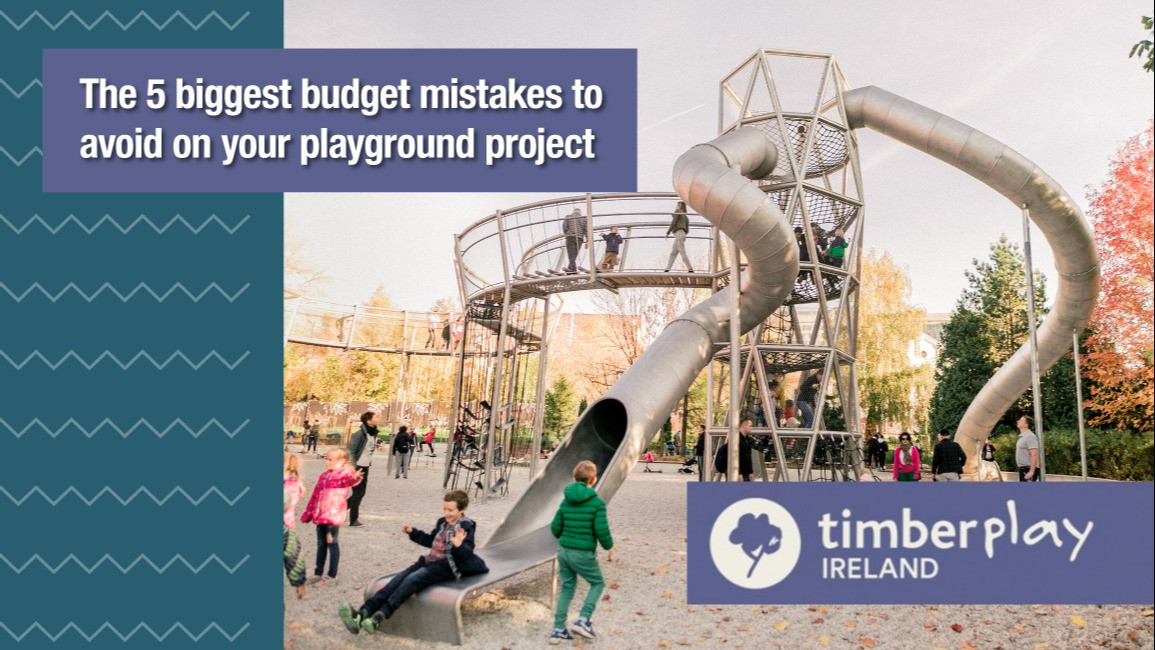Today In Play
As specialists in the design and delivery of children’s playground and play spaces, we have successfully helped many clients over the years turn ideas into reality. During that time, we’ve also gained insights into avoidable mistakes which can make a project more expensive than originally envisioned.
For your consideration we have compiled the top 5 biggest budget killers that we see most often, and most importantly, how to resolve them.
1. Design over functionality
While aesthetics are important, the primary focus of any play space should be about creating an area that has a range of features to challenge and stimulate the minds of the children and ultimately provide a fun, safe environment.
There are fewer tragic sights than a beautiful disused playground. The reasons, of course, can be varied - unsuitable/unsafe equipment, lack of consideration for the community needs, insufficient care and upkeep of facilities.
Playgrounds should instil a sense of fun and challenge. Children are less attracted by shiny new equipment than the actual functionality of a park feature. Staid, boring features - however visually appealing, are likely to be lost on the young adventurer, if it doesn’t interest them mentally and physically. It is better to focus one's energy (and budget) on creating an experience which will maximise their play value.
2. Unclear or insufficient budget
It is important to budget accordingly, especially at the design stage of the playground. There are many factors to consider when performing a cost analysis - expected number of children who will use it, type of equipment needed, installation costs, site preparation, etc.
Planning ahead and understanding the products needed, and their associated costs ensures that there won’t be any last minute changes (additions or subtractions) which can impact the overall experience of playgoers. Allowing for extra costs is strongly advised because schemes can take years to procure.
Sourcing products from a single supplier instead of multiple companies can help reduce installation and delivery costs.
Also, there are few projects that run perfectly smoothly, so budgeting for unforeseen circumstances can be a hedge against creeping costs. These could include cleaning or rubbish removal, shade installation, drainage, etc. Factoring such items into a clear budget will ensure that corners won’t be cut and the project is clearly defined and executed to plan.
3. Uneven investment in equipment/area
Playgrounds are not a ‘one-size-fits-all’ space. Location is important, granting easy access to children in a safe and secure setting. The space afforded should consider the expected number of children who will participate in the activities, and fit their specific needs.
Investing the bulk of your budget in an expensive water feature that limits participation to 1 or 2 children, at the expense of the remaining cheaper alternative options is a surefire way to frustrate and disappoint many of those in attendance.
4. Failure to comply with safety standards
Critical for any play space is safety. Safe doesn’t necessarily mean boring. Play spaces should be fun and challenging to get kids moving. When there is an element of risk involved in some products and features, however small, there needs to be a degree of caution built in to provide assurances for their wellbeing.
At Timberplay, we focus on offering products and play spaces that adhere to European Safety Standard EN1176. Considerations should be given in the project plans to all potential areas of risk, i.e. sufficient safety surface allocation, spacing between equipment for fall zones.
5. Lack of insight about community
Some children have complex needs and may work better in environments designed to facilitate their unique behaviours. It is important to understand the purpose of the play space, who it is for and design according to their specific requirements.
A playground in a secondary school with highly active teens will be very different to a dedicated play space for young children with special educational needs. These considerations should be factored into the early conception and design space because the products, accompanying layout and design will all vary based on these choices.
For example, it would be ill-conceived to only add a feature such as wheelchair access post-design, and would inevitably add to installation/organisational issues, project creep and budget adjustments. Creating a project with a blend of products that appeal to the entire age spectrum and needs of children is ideal and something that we created for Castle Tower School, Ballymena in Northern Ireland.
The community should be involved as much as possible through consultations to ensure the project needs are being met.
-
To learn more about how Timberplay Ireland can design, advise and ultimately install a playground within your budget, contact us today.
